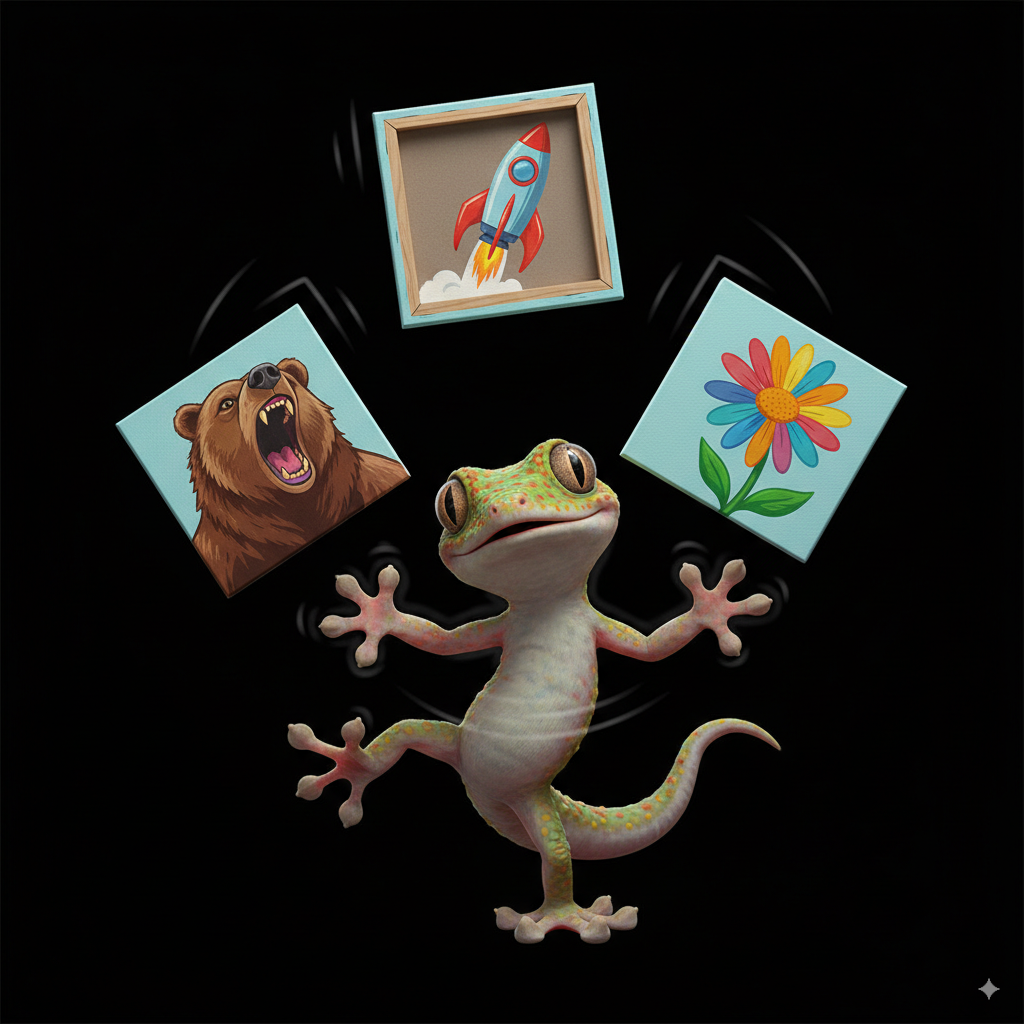Animal Action Object (AAO)
A simple and fun way to memorize numbers

The Animal-Action-Object (AAO) system is a compact and intuitive memory technique designed to transform numbers into vibrant, unforgettable mental images. This changes number-memorization from a boring activity into a fun and easy thing to do.
As a simple variation of the classic Person-Action-Object (PAO) system, AAO leverages the innate connection children and adults have with the animal kingdom to create a powerful tool for memorization.
This guide details the unique structure of the AAO system, its solution to common memorization hurdles, and why it is an ideal mnemonic method to introduce to learners of all ages, but especially children.
The Core of the AAO System: 110 Unique Combinations
The strength of this AAO system lies in its comprehensive and unambiguous structure. You create a unique "AAO unit"—an Animal, a specific Action, and a related Object—for 110 different numbers:
- 100 units for double digits (00-99): Each two-digit number has its own distinct trio.
- 10 units for single digits (0-9): Each single digit also has its own unique trio.
For example:
- Number 7: Animal = Octopus, Action = Painting, Object = A Canvas
- Number 08: Animal = Lion, Action = Juggling, Object = Flames
- Number 42: Animal = Gecko, Action = Climbing, Object = A Wall
Solving the "Padding Problem" with Intuitive Left-to-Right Flow
One of the most common stumbling blocks in memory systems based on number pairs (like a standard 00-99 PAO system) is the awkwardness of handling numbers with an odd number of digits. Take the number 42087. To encode it, you first have to stop and count the digits. Realizing there are five, not six, you must then mentally "pad" it with a leading zero, forcing you to memorize 04-20-87. This multi-step process—count, analyze, pad, then encode—is slow, unnatural, and a recipe for wasteful mental friction. A simple mistake in pairing, like starting with 42-08..., leads to a dead end and forces a frustrating do-over.
The 110-unit AAO system elegantly eliminates this problem with a seamless left-to-right encoding process. There is no need to count digits beforehand to determine if the length is odd or even. You simply scan the number from left to right, grouping by pairs as you go. If a single digit remains at the end, you use its pre-assigned unit from your dedicated single-digit list (0-9).
This makes the process fluid and removes the cognitive load of extra steps or re-dos. Let's see it in action:
To memorize the number 42087:
You scan from left to right, breaking it down naturally as 42 - 08 - 7:
- Take the Animal from your double-digit unit for 42 (gecko).
- Take the Action from your double-digit unit for 08 (juggling).
- Take the Object from your single-digit unit for 7 (canvas).
42087 becomes a Gecko juggling canvas.
To memorize the number 987:
You follow the exact same process, breaking it down as 98 - 7:
- Take the Animal from your double-digit unit for 98.
- Take the Action from your single-digit unit for 7.
Your brain automatically knows when to draw from your single-digit list — only when one digit remains at the rightmost end of the number. This simple, consistent rule removes all ambiguity and the need for padding, making the AAO system faster, more efficient, and far easier to master.
An Ideal System for Early Learners
The AAO system's accessibility makes it perfect for young children, whose cognitive development thrives on concrete, relatable concepts. Animals are universally understood—a child instantly grasps a "bear," unlike abstract figures like Albert Einstein in traditional PAO systems, which require prior knowledge.
It stimulates imagination and memory retention: Children's natural curiosity about animals enhances engagement, focus, and recall, as shown in studies on animal-assisted education.
Additionally, AAO fosters creativity through the automatic mixing of ideas when encoding numbers. If a set of storybooks is built upon the AAO system, their lessons can continue to be useful for a person even in their forties, providing a lifelong mnemonic foundation for learning.